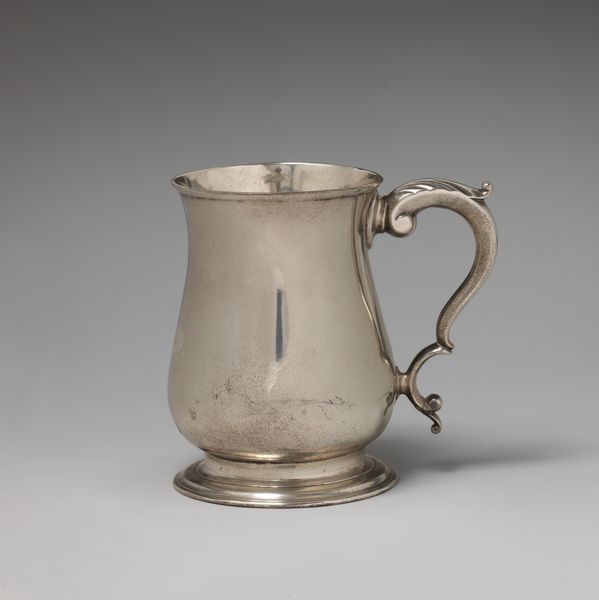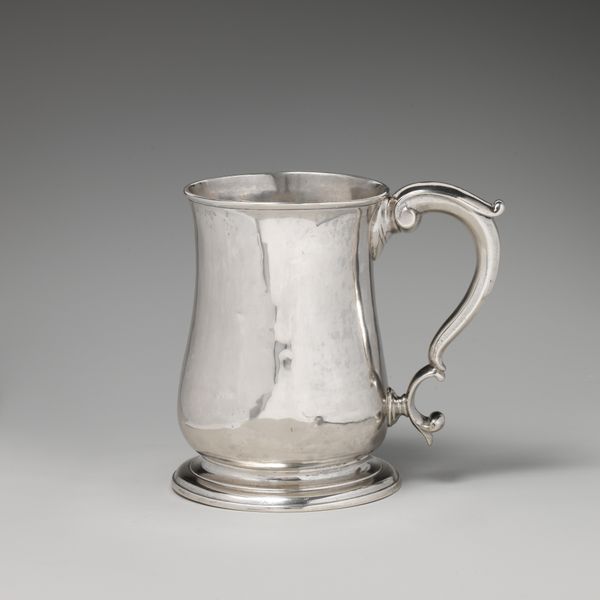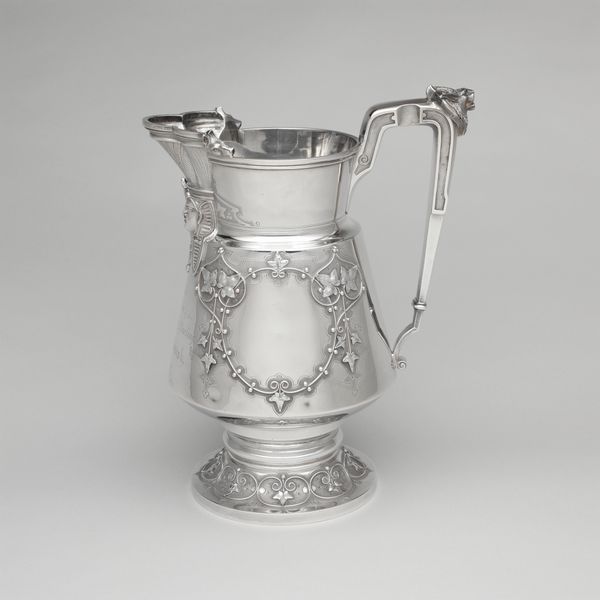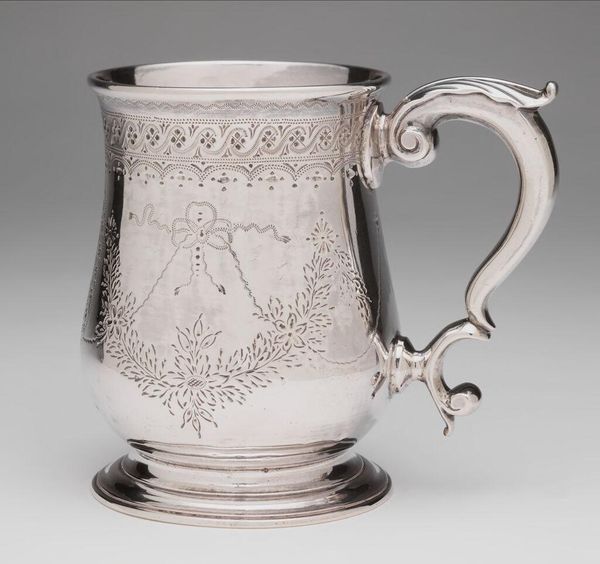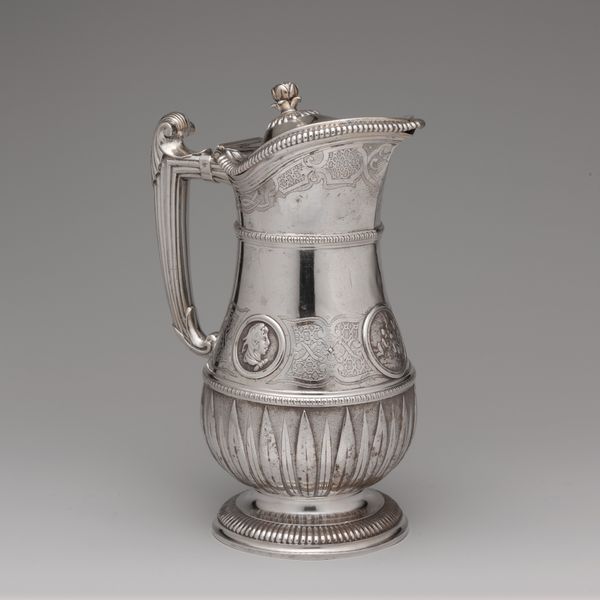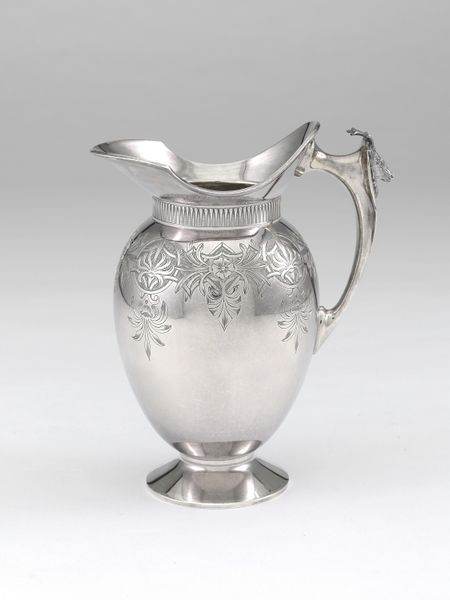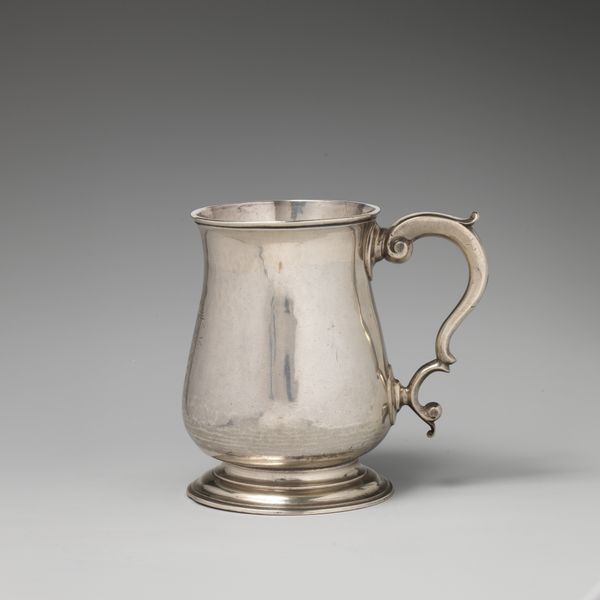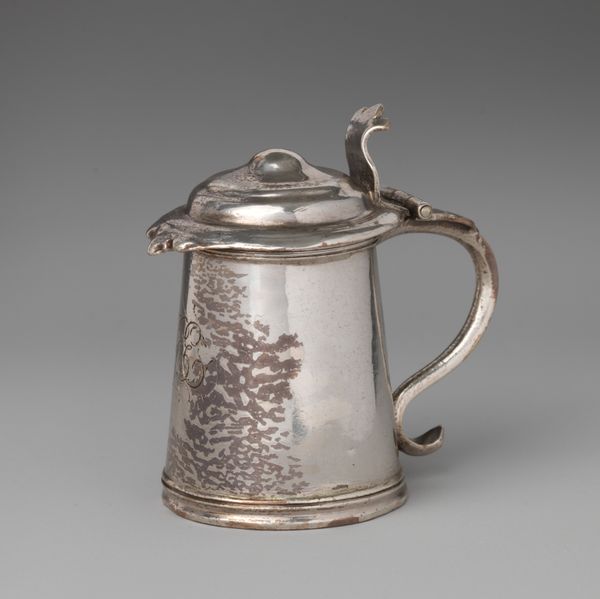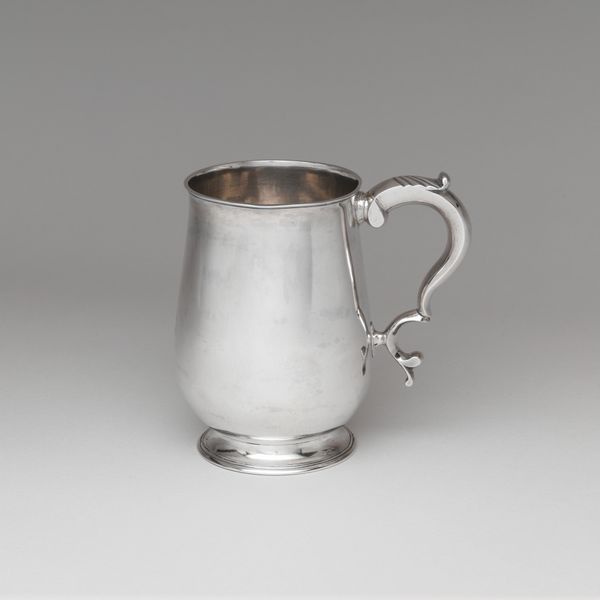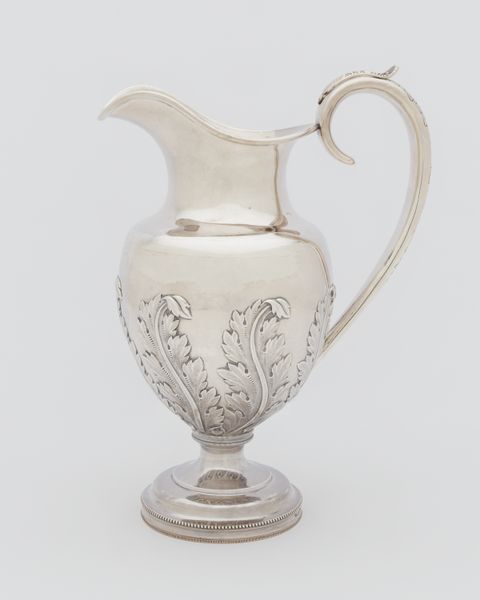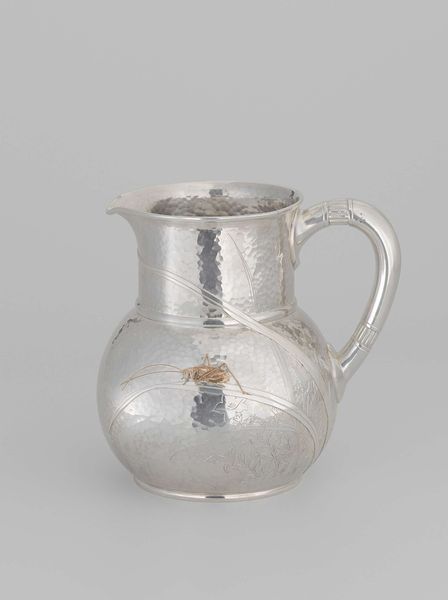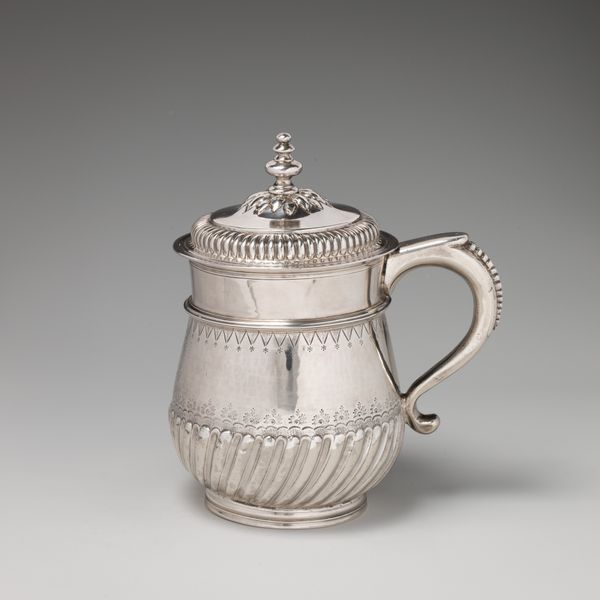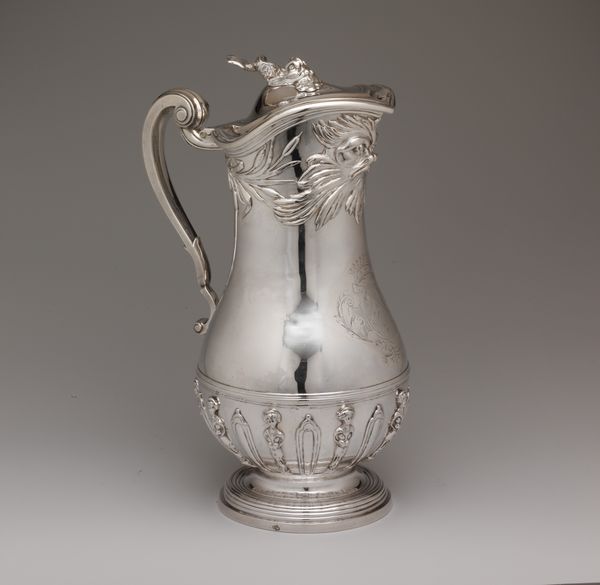
Dimensions: Height: 4 in. (10.2 cm)
Copyright: Public Domain
Editor: This silver mug, crafted by William Grundy around 1763-1764, is currently housed at the Met. It strikes me as simultaneously utilitarian and precious. What social stories might a seemingly simple object like this tell us? Curator: A piece like this allows us to examine the intersection of wealth, status, and everyday life in 18th-century society. Silver, of course, signified affluence. The engraved monogram elevates it beyond mere function, suggesting a specific family or individual. Do you notice anything about the style of the engraving? Editor: The Baroque details give it a really ornate feel; the flourishes and the almost celebratory vibe are palpable. Curator: Exactly. The Baroque, even then, alluded to a particular understanding of luxury. This wasn't simply about drinking; it was about display. Think about where this mug might have been used—a private home, yes, but also perhaps a setting for social gatherings where demonstrating one’s place was important. Who do you think was this "Mug" created for? Editor: Someone affluent looking to subtly demonstrate status without being ostentatious perhaps? Curator: Precisely. It also begs the question: what kind of beverages would be served? Tea? Ale? Knowing the contents could provide deeper insights into the rituals surrounding its use. The "Mug" is like a quiet document reflecting hierarchies and taste. Editor: I never would have thought this mug could embody so much historical context. Thanks for opening my eyes! Curator: It is a reminder that every object holds a history, reflecting the society that produced it and the people who valued it. Examining design details is like finding clues to cultural ideologies.
Comments
No comments
Be the first to comment and join the conversation on the ultimate creative platform.
